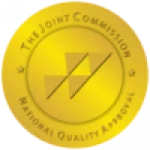Obsessive-compulsive disorder (OCD) is more than just a set of habits or quirks—it can deeply impact a teen’s daily life, education, relationships, and self-esteem. Research shows that OCD affects about 1–3% of children and adolescents, with many beginning to experience symptoms before the age of 18. Left untreated, OCD can contribute to worsening anxiety disorders, depression, and even substance use as teens struggle to cope with overwhelming intrusive thoughts and compulsions.
At Northern Illinois Recovery in Crystal Lake, Illinois, we recognize how critical early intervention and specialized care are for teenagers navigating OCD and co-occurring conditions. Through our teen intensive outpatient program (IOP), we provide evidence-based mental health treatment that gives teens the tools they need to manage symptoms, regain control, and build a healthier future.
OCD is not the same as liking things neat or being organized. It causes real distress, takes up significant time, and interferes with daily activities like school, friendships, and family life. Key differences between OCD and typical teenage behavior:
- Time consumption: OCD thoughts and rituals take up more than an hour daily
- Distress level: The thoughts feel unwanted and cause significant anxiety
- Interference: Symptoms get in the way of normal activities and relationships
Signs and Symptoms of OCD in Teens
- Harm thoughts: Worrying about accidentally hurting someone or causing damage
- Contamination fears: Being afraid of germs, illness, or spreading sickness to others
- Symmetry needs: Feeling like things must be “just right” or perfectly balanced
- Religious worries: Concerns about sin, morality, or being a bad person
- Checking doubts: Repeatedly wondering if doors are locked or appliances are off
Compulsions you might notice:
- Excessive handwashing or showering that causes skin irritation
- Repeatedly checking locks, homework, or turning appliances on and off
- Arranging items in perfect lines or specific patterns
- Asking the same questions for reassurance multiple times
- Mental rituals like counting, praying, or trying to “cancel out” bad thoughts
OCD in teen girls often includes body image obsessions, relationship fears, and academic perfectionism driven by anxiety rather than ambition. Some girls hide their symptoms behind high achievement, making the condition harder to spot.
How is OCD Diagnosed in Adolescents?
The evaluation looks at specific symptom patterns, how much time obsessions and compulsions take up, and how much they interfere with daily life. Mental health professionals use the DSM-5 criteria, which require the presence of obsessions, compulsions, or both that are time-consuming or cause significant distress. Conditions that can look similar to OCD:
- Generalized anxiety: Involves worry rather than specific intrusive obsessions
- ADHD: Features include inattention, not ritualistic checking behaviors
- Autism spectrum disorders: Shows rigidity, but OCD compulsions are driven by anxiety
Getting the right diagnosis ensures teens receive the most effective evidence-based treatment for OCD.
OCD Treatment for Teens
- Individual therapy: One-on-one therapy sessions focused on facing fears without doing rituals
- Group therapy: Multiple teens work together, providing peer support and reducing isolation
- Medication: SSRIs may be added for moderate to severe cases or when ERP alone isn’t sufficient
ERP works by gradually exposing teens to their feared thoughts or situations while they resist performing compulsions. This breaks the cycle that keeps OCD symptoms going.
How Exposure and Response Prevention Works
The therapist and teen create a “fear ladder” that lists anxiety-provoking situations from least to most distressing. Treatment starts with lower-level fears and gradually works up to more challenging ones.
During exposures, teens face their fears in a safe, planned way while resisting the urge to perform compulsions. At first, anxiety increases, but it naturally decreases over time without rituals. This process is called habituation. The four steps of ERP:
- Step 1: Build a hierarchy of fears ranked from easiest to most difficult
- Step 2: Practice gradual exposure, starting with less distressing items
- Step 3: Resist performing rituals during and after exposures
- Step 4: Review progress and create plans to maintain improvement
Medications for Teen OCD
- Fluoxetine (Prozac)
- Sertraline (Zoloft)
- Fluvoxamine (Luvox)
These medications can decrease the intensity of obsessions and make it easier for teens to participate in ERP therapy. However, medication alone doesn’t teach the coping skills needed for long-term recovery. Combining ERP with medication often produces better results than either treatment alone, especially for moderate to severe cases.
OCD Treatment for Teens at NIRC
- Outpatient therapy: Weekly sessions while living at home, suitable for mild to moderate OCD
- Intensive outpatient programs: Multiple sessions per week for teens who need more support
- Partial hospitalization: Daily structured treatment with evenings at home for severe symptoms
- Residential treatment: 24-hour care for the most severe cases that prevent basic functioning
Most teens start with outpatient treatment for ocd in teenagers and move to higher levels of care only if needed.
Supporting Your Teen at Home
Schools can create accommodations that support ERP goals while maintaining appropriate academic expectations. Teachers benefit from understanding that OCD behaviors are driven by anxiety, not defiance.
Helpful daily routines:
- Consistent sleep schedule and regular exercise
- Balanced meals and limited caffeine intake
- Social connections and activities unrelated to OCD
Teen OCD Treatment FAQs
No specific foods cause OCD, but caffeine and high sugar intake may increase anxiety in some teens, potentially making symptoms feel more intense.
Most ERP treatment courses involve 12-20 sessions, depending on symptom severity, with some teens benefiting from occasional booster sessions to maintain progress.
Most insurance plans cover mental health treatment, including CBT with ERP for OCD, though coverage details vary by plan and provider network.
Yes, some adolescents may use substances to self-medicate OCD-related anxiety, which requires integrated treatment addressing both conditions simultaneously.
Teens are Supported at Northern Illinois Recovery Center
Our compassionate clinicians employ evidence-based approaches tailored to adolescents, helping them develop coping strategies, alleviate symptoms, and regain confidence in themselves. We also recognize the importance of family support, and we work alongside parents and caregivers to strengthen communication and healing at home.
Every teen deserves the chance to feel hopeful, understood, and empowered. Reach out to Northern Illinois Recovery today to learn how our team can help your family take the next step toward lasting recovery and wellness.





